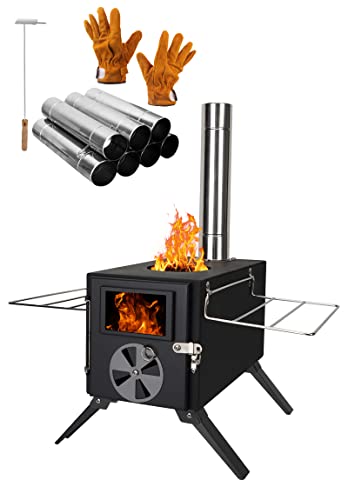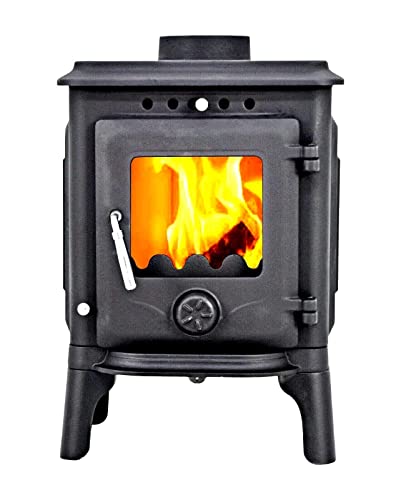Be On The Lookout For: How Stove Wood Burning Is Taking Over The World…
페이지 정보
Writer Demi 작성일24-08-11 18:48 View111 Reply0본문
 How to Properly Start a Wood Burning Stove
How to Properly Start a Wood Burning StoveWood stoves are a great way to save energy and also heat rooms. However, they need an amount of care.
 Many modern wood stoves comply with EPA emission guidelines. You can look for an EPA sticker on the grate or beneath it to ensure that your stove doesn't release harmful pollutants.
Many modern wood stoves comply with EPA emission guidelines. You can look for an EPA sticker on the grate or beneath it to ensure that your stove doesn't release harmful pollutants.How to start a Wood Fire
The smell and sound of a woodfire is a welcome addition in any home. It's important to know how to build a fire on your stove. Incorrect methods can result in an unburned fire that doesn't burn effectively and produces smoke or creosote. The tips below can help you create an efficient fire that can heat your home quickly and efficiently.
Examine the condition of your coals and logs before you start an fire. If they're damp it will dampen your fire and hinder proper burning. You may want to open the chimney to eliminate any ash that's fallen into the stove.
Begin by putting a few small wood burner stoves, dry pieces of newspaper in the stove. This will help to ignite the tinder and kindling. When they begin to ignite, add a layer of larger pieces of kindling to the top of the pile. This should be done in a crosshatch pattern so there is air between each piece of wood.
If your wood stove is equipped with an automatic control for combustion, it will automatically pump air into the fire as it grows. This will help the fire to burn at a steady pace without having to open the stove's doors to tend it.
It's important to avoid using excessive tinder as this can lead to an unburned fire that burns at an excessive rate and fireplacesandstove doesn't use the fuel as efficiently as possible. Once you've made a solid foundation in your stove that is made of igniters, tinder, and embers, start the main flame by laying two large logs of the base on the grill. Then, on the top of these base woods lay a layer parallel to them. This method of constructing an ember called a "top-down" fire will result in a powerful and long-lasting fire that doesn't engulf the larger base logs.
When your fire is established Close the damper and keep it closed. The fire may be smothered by opening the damper before it has fully established. It will also reduce the effectiveness of the fire.
Add Wood
Stoves can be used to efficiently heat your home and also save you money. They can be used together with a central heating system or furnace to provide additional heating for large homes. Many of the latest stoves that are clean burning available use advanced combustion principles that separates the burning volatile compounds from combustible gases and tar. This is achieved by supplying air at two distinct stages. The first stage is for the vaporization, while the second step is to supply fresh air that has been pre-heated. This enhances the combustion process and helps reduce the odors.
The amount of heat that you will get from your stove depends on both the species of wood used and the moisture content, as well as the size of the logs. The logs must be stored in a well-ventilated space for several months before you try to burn them to give the wood a chance to dry out. If the logs have too much moisture, they will produce steam which is essentially wasted energy.
You should add wood to the pile at intervals, not all at once. In addition, adding too much wood all at once could cause the temperature to rise in the firebox, causing an air vortex that pulls smoke and volatile compounds that have not been burned back into flames. This can reduce the efficiency of your stove.
You should avoid the use of any other combustibles, such as paper or cardboard in your stove, as they are not wood and have very different physical properties that cannot be burned safely without creating dangerously high temperatures and exorbitant emissions. Also, avoid using compressed combustibles such as wood briquettes, as they have a completely different chemical and physical properties from actual firewood and are not approved for burning in wood burning stoves.
If you're installing wood-burning stoves into your home, it is essential to have it installed and tested by a professional. A certified WETT technician will test the installation to ensure proper operation and safety, and also ensure that your chimney is functioning properly. These professionals can also offer maintenance services to keep your stove and chimney in top condition. They can check for leaks in the areas accessible to your chimney, and fix any issues they discover. They will also make sure that the occupants of the house understand and adhere to the fire evacuation procedures in case of an accident.
Adjusting the Damper
If you're not making use of your stove, a damper controls the amount of heat lost through the chimney. In addition, it can help you control the fire. If the flue is opened but the damper is not closed enough, the fire won't burn properly and it will billow out smoke into your living space. You can adjust your damper to achieve the most effective flames by playing around with different positions.
You want to keep your damper open to allow air to flow into and out of the flue when a flame is burning. This allows the fire to start a fire and helps it stay burning so that you can enjoy it for long periods of time. The proper opening will prevent the fire from starving of air and prevent it from blowing out smoke.
To properly adjust your damper first, make sure that the fireplace is heated and that the wood stove is hot. This will ensure that the chimney is warm and has good draft. Once these are done the wood stove damper can be adjusted.
After the fire has been burning for a while, you should close the damper approximately three quarters of the way. This will stop the warm air from the room from going through the chimney, while allowing the smoke to escape out of the wood stove.
This is the best way to keep your fire lit and keep it from getting too hot. The draft could be stopped if you shut the damper too far but a cold wind can enter your home if the damper is left open.
By placing your hands on the top of the flue pipe will show you how much the damper has sunk. If you feel a slight breeze pushing against your hand The damper is most likely in an open position.
The damper settings may differ between stoves and even between different kinds of wood. You can experiment with different settings to get an idea of the most suitable setting for your stove.
Clean up
After a fire, it is important to clean the stove and flue. This will help reduce the risk of a chimney fire, which is the primary reason for wood stove fires in homes. Creosote is a sticky substance which can build up in the stovepipe, is extremely dangerous. It is caused by the moisture and wood particles that are not burned that are unable to escape the fire. It could also be caused by improperly lit fires.
A regular cleaning routine can help prevent the buildup of creosote. This can be accomplished by sweeping your chimney once every year. It is also recommended to have your fireplace and stove professionally cleaned and examined at least every year.
Also, it's an excellent idea to clean the ash tray and the grates regularly. It is recommended to burn only seasoned wood because it produces less creosote. Avoid burning cardboard, paper and plastic. These materials can release harmful chemicals to the air and flue which could be released in your home.
The glass that is used on the wood burning stove has to be cleaned frequently too. The majority of modern wood stoves have self-cleaning windows so they don't require as much scrubbing. If you're unable to clean the glass of your wood stove as clean as you would like There are stove glass cleaners available that can be used on the window.
Other helpful suggestions for maintaining your wood stove include turning the vent off when you are not using it, and opening the door or window to increase the flow of air. This will ensure that the fire is burning more hot and efficient. The wood stove will not have to be as active to circulate air. It is advisable not to stack logs, or let them sit on the fire for a long period of time. This could cause splits and warping. Finally, it is best to avoid using compressed combustible wood logs in your wood stove as the paraffin they contain could melt and spill into the flue which could cause damage to the stove.
Reply List
No message.

